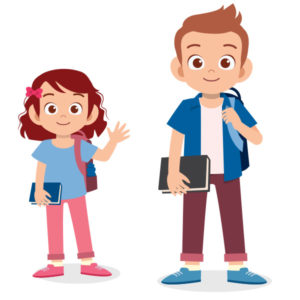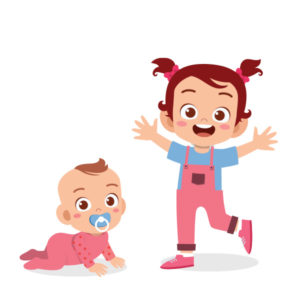Did you know 30% of our patients are children?
We believe that kids should be able to run, play and grow without being held back by pain or discomfort. This is why we work extensively with kids when they develop any pains, unusual walking patterns, or their feet and legs aren’t developing as expected. Our goal is always to help them enjoy a happy and active adult life by getting to the root of the problem, not just the symptoms.
As the feet and legs grow and change so quickly, it can be difficult for parents to know what is normal, and what isn’t. To help, here are the top 5 lower limb problems that our younger patients experience:

Top ailments in children aged 1-5 years old:
1. Delayed walking (developmental milestones)
One of the most important milestones in your child’s life is their first steps. Most children will take their first steps around twelve months old. If your child is not walking at 15-16 months, it is recommended they are assessed by a podiatrist.
2. Hypermobility
If your kids are extra flexible, they may have joint hypermobility syndrome. This is common in young children, but in some cases, can lead to problems like joint pain and injuries. If your child is in pain, have them assessed to help avoid possible future problems like the painful adult flat foot.
3. Flat feet (pronated foot posture)
Very young children appear to have less visible arches due to the fatty pad underneath their feet. As they grow, their arch should appear. If your child’s arch does not form by the age of 3, they may be more vulnerable to developing foot pain and should be assessed.
4. Tip toe walking
When children are first starting to learn to walk confidently, they may tiptoe, and it may then become a habit. Tip toe walking should be outgrown by the age of 3. If it is not, it is recommended to have an assessment to rule out more serious causes of the toe walking and possibly treat physical and developmental conditions.
5. In-toeing (pigeon toes)
When the feet turn in to face one another during walking, this is known as in-toeing (pigeon toeing). When kids are first learning to walk, this is a short-lived and normal posture that is quickly outgrown. If your child continues to walk like this beyond 4 years old, however, they may need help from a podiatrist to correct their foot posture.


Top ailments in children aged 6-17 years old:
1. Ingrown toenails
Ingrown toenails develop when a sharp edge of the nail grows into the surrounding skin. They are often incredibly painful and cause redness, swelling and yellow/clear discharge if an infection develops. Ingrown toenails affect people of any age. While the big toe is most commonly affected, ingrown nails can occur in any of the toes. As this problem cannot heal until the nail edge is removed from the skin, treatment from a podiatrist should be sought as early as possible.
2. Sever’s disease
Often referred to as ‘growing pains’ at the back of the heels, Sever’s is a temporary and treatable growth-related condition. It causes pain at the back of the heels that often comes on during or after physical activities like running or sports. There’s a myth that this pain must be “waited out” and nothing can be done to help – this is completely false. We treat this condition by treating the cause – the uneven rate of bone growth and muscle lengthening.
3. Freiberg’s disease
This disease affects the second metatarsal head (the bone before the big toe) that can lead to pain and loss of function in the forefoot. If your child experiences pain in the bone before their big toe, a sensation of walking on something hard, pain when bearing weight on their foot or swelling around the affected joint, make an appointment with your podiatrist.
4. Shin splints
If your child feels pain, stiffness and swelling at one or both of their shins during or after exercise, it may be caused by shin splints. As the symptoms of shin splints are similar to stress fractures and compartment syndrome, it is recommended that kids are assessed by a podiatrist for diagnosis and appropriate treatment.
5. Runner’s knee pain
Runner’s knee can affect people of all ages and activity levels and gets its name for often affecting those that are active on their feet. It causes pain and aches around or behind the kneecap, quickly making it very uncomfortable to run or walk. As runner’s knee pain can have a variety of causes, from overusing muscles to poor foot posture, it’s important to have knee pain assessed by a podiatrist.
Get back to school ready with our '$95 Comprehensive Initial Consult' offer, book online here!



